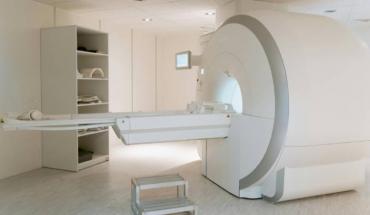Bone Mineral Content
Bone Densitometry
(Bone Mineral Density [BMD] Test, Bone Density Test, Bone Mineral Content, Bone Absorptiometry)
Procedure overview
What is bone densitometry?
Bone densitometry is used to measure the bone mineral content and density. This measurement can indicate decreased bone mass, a condition in which bones are more brittle and more prone to break or fracture easily. Bone densitometry is used primarily to diagnose osteoporosis and to determine fracture risk. The testing procedure measures the bone density of the bones of the spine, pelvis, lower arm, and thigh.
Bone densitometry testing may be done using X-rays, dual-energy X-ray absorptiometry (DEXA or DXA) or by quantitative CT scanning using special software to determine bone density of the hip or spine. These procedures are generally done in a clinic, hospital, or free-standing radiology facility.
However, for mass screening purposes, there are portable types of bone densitometry testing. The portable testing is done using either a DEXA (or DXA) X-ray device or a quantitative ultrasound unit. Both types of portable testing may use the radius (one of the two bones of the lower arm), wrist, fingers, or heel for testing. The portable testing, while useful for general screening, is not as precise as the nonportable methods because only one bone site is tested.
Standard X-rays may detect weakened bones. However, at the point where bone weakness is obvious on standard X-rays, the bone weakness may be too far advanced for treatment to be effective. Bone densitometry testing can determine decreasing bone density and strength at a much earlier stage when treatment of the bone weakness can be beneficial.
Test results
The bone densitometry test determines the bone mineral density (BMD). Your BMD is compared to two norms--healthy young adults (your T-score) and age-matched (your Z-score).
First, your BMD result is compared with the BMD results from healthy 25- to 35-year-old adults of your same sex and ethnicity. The standard deviation (SD) is the difference between your BMD and that of the healthy young adults. This result is your T-score. Positive T-scores indicate the bone is stronger than normal; negative T-scores indicate the bone is weaker than normal.
According to the World Health Organization, osteoporosis is defined based on the following bone density levels:
| |
| Click Image to Enlarge |
-
A T-score within 1 SD (+1 or -1) of the young adult mean indicates normal bone density.
-
A T-score of 1 to 2.5 SD below the young adult mean (-1 to -2.5 SD) indicates low bone mass.
-
A T-score of 2.5 SD or more below the young adult mean (more than -2.5 SD) indicates the presence of osteoporosis.
In general, the risk for bone fracture doubles with every SD below normal. Thus, a person with a BMD of 1 SD below normal (T-score of -1) has twice the risk for bone fracture as a person with a normal BMD. A person with a T-score of -2 has four times the risk for bone fracture as a person with a normal BMD. When this information is known, people with a high risk for bone fracture can be treated with the goal of preventing future fractures. Severe (established) osteoporosis is defined as having a bone density that is more than 2.5 SD below the young adult mean with one or more past fractures due to osteoporosis.
Secondly, your BMD is compared to an age-matched norm. This is called your Z-score. Z-scores are calculated in the same way, but the comparisons are made to someone of your age, sex, race, height, and weight.
In addition to bone densitometry testing, your doctor may recommend other types of tests, such as blood tests, which may be used to detect the presence of renal (kidney) disease, evaluate the function of the parathyroid gland, evaluate the effects of cortisone therapy, and/or assess the levels of minerals in the body related to bone strength, such as calcium.
Other related procedures that may be used to diagnose bone problems include bone scan and X-rays of the bones. Please see these procedures for more information.
Reasons for the procedure
Bone densitometry testing is primarily performed to identify persons with osteoporosis and osteopenia (decreased bone mass) so that the appropriate medical therapy and treatment can be implemented. Early treatment helps to prevent future bone fractures. It may also be recommended for persons who have already had a fracture and are considered at risk for osteoporosis.
The complications of broken bones resulting from osteoporosis are often severe, particularly in the elderly. The earlier osteoporosis can be identified, the sooner effective treatment can be implemented, thus most likely lessening the severity of the condition.
Bone densitometry testing may also be used:
-
To confirm a diagnosis of osteoporosis if you have already had a fracture
-
To predict your chances of fracturing in the future
-
To determine your rate of bone loss and/or monitor the effects of treatment
There may be other reasons for your doctor to recommend bone densitometry.
What are the causes of osteoporosis or osteopenia?
Osteoporosis is most commonly found in postmenopausal women, where the absence of the hormone estrogen is related to the loss of bone mass. Other conditions that may cause osteoporosis or osteopenia include, but are not limited to, the following:
-
Renal (kidney) failure
-
Hyperparathyroidism (overactive parathyroid gland)
-
Prolonged immobility
-
Long-term corticosteroid therapy
-
Long-term hormone replacement therapy
-
GI (gastrointestinal) malabsorption disorder
-
Cushing's syndrome. A condition in which there is increased production of glucocorticoids by the adrenal glands due to either an adrenal gland tumor or pituitary gland hyperfunction
These conditions affect bone formation due to problems with absorption of certain substances, such as Vitamin D and calcium, which are needed to form strong bones.
Risks of the procedure
You may want to ask your doctor about the amount of radiation used during the procedure and the risks related to your particular situation. It is a good idea to keep a record of your past history of radiation exposure, such as previous scans and other types of X-rays, so that you can inform your doctor. Risks associated with radiation exposure may be related to the cumulative number of X-ray examinations and/or treatments over a long period of time.
If you are pregnant or suspect that you may be pregnant, you should notify your health care provider. Radiation exposure during pregnancy may lead to birth defects.
There may be other risks depending on your specific medical condition. Be sure to discuss any concerns with your doctor prior to the procedure.
Certain factors or conditions may interfere with bone densitometry testing. These include, but are not limited to, the following:
-
Metal jewelry or other metal objects
-
Body piercing
-
A barium X-ray within 10 days of testing
-
Calcific arthritic sclerosis of the posterior vertebrae
-
Calcified abdominal aortic aneurysm
-
Healed bone fractures
-
Metallic clips from previous abdominal surgery
-
Recent bone scans
Before the procedure
-
Your doctor will explain the procedure to you and offer you the opportunity to ask questions that you might have about the procedure.
-
Generally, no prior preparation, such as fasting or sedation, is required. However, you may be advised to stop taking calcium supplements 24-48 hours prior to your bone density test.
-
Notify the technologist if you are pregnant or suspect you may be pregnant.
-
Based on your medical condition, your doctor may request other specific preparation.
During the procedure
Bone densitometry testing may be performed on an outpatient basis or as part of your stay in a hospital. Procedures may vary depending on your condition and your doctor's practices.
Generally, bone densitometry follows this process:
-
In some cases, you may stay dressed but will be asked to remove all metallic objects, such as belt buckles, zippers, coins, keys, and jewelry. In other cases, you will be given a gown to wear so that no buttons, zippers, or hooks will interfere with the imaging process.
-
You will be positioned on an X-ray table, lying flat. Your legs will be supported on a padded box which serves to flatten the pelvis and lumbar spine.
-
Under the table, a photon generator will pass slowly beneath you, while an X-ray detector camera will pass above the table parallel to the photon generator beneath, projecting images of the lumbar and hip bones onto a computer monitor.
-
After the scan of the lumbar and hip bones is complete, your foot will be inserted into a brace that moves your nondominant hip (the side you use the least) into an internally-rotated position, and the previous imaging procedure is repeated.
-
The next imaging procedure will involve the radius, one of the two bones of the lower arm. The nondominant arm (the arm you use the least) is usually examined, unless there is a history of a fracture of that arm.
-
The computer will calculate the amount of photons that are not absorbed by the bones to determine the bone mineral content. The bone mineral density will then be calculated by the radiologist.
While the bone densitometry procedure itself causes no pain, the manipulation of the body part being examined may cause some discomfort or pain, particularly in the case of a recent injury or invasive procedure such as surgery. The technologist will use all possible comfort measures and complete the procedure as quickly as possible to minimize any discomfort or pain.
After the procedure
There is no special type of care following bone densitometry testing. You may resume your usual diet and activities, unless your doctor advises you differently.
Related Questions
Mantoux Test Query
- 3480 Days ago
- Tests & Procedures
My Rheumatoid Factor is - H 74 IU/mL
- 3638 Days ago
- Tests & Procedures
Suffering from piles
- 3759 Days ago
- Tests & Procedures
widal positive
- 3873 Days ago
- Tests & Procedures
Whitish viscosity
- 3882 Days ago
- Tests & Procedures
LINAC procudure, 3DRT and IMRT
- 3896 Days ago
- Tests & Procedures
Ecg of heart showed T wave changes
- 3937 Days ago
- Tests & Procedures
CT Coronary Angiography
- 3921 Days ago
- Tests & Procedures





















